Motoï Yamamoto unveils his 'Floating Garden' saltscape at La Galerie Particulière in Paris
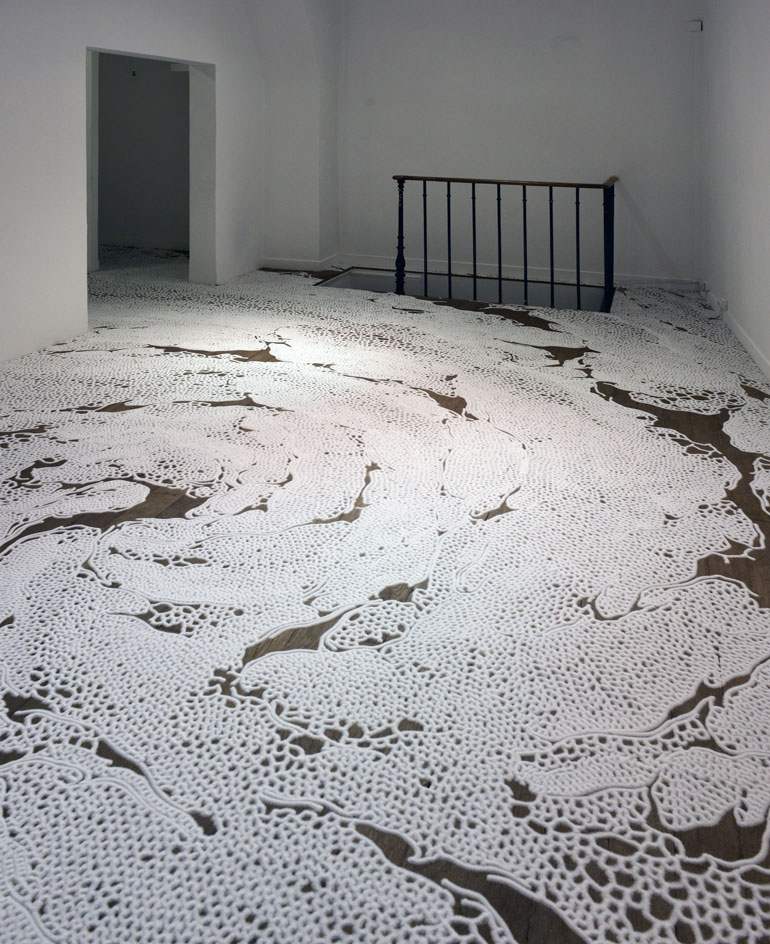
To say Motoï Yamamoto suffers for his art is understatement. The Tokyo-based artist spent 25 hours hunched on his knees creating his latest installation, 'Floating Garden', at La Galerie Particulière in Paris. Using a plastic bottle with a narrow nozzle, he painstakingly 'drew' thousands of arcs of salt - a traditional symbol for purification and mourning in Japanese culture - as if multiplying on the concrete floor of the 'deuxième galerie'. The result is part mind-bending maze, part Tibetan 'mandala'.
The Japanese are familiar with the presence of salt as an icon. Often it's placed in piles at shop entrances to ward off evil spirits, in paths at funerals or even at sumo matches. Yamamoto adopted it as a medium after the death of his sister at age 24 from cancer. It was a way for him to preserve the past.
'Drawing with salt,' he says, 'is like following a trace of my memory. Memories seem to change and vanish as time goes by. What I seek is to capture a frozen moment that cannot be attained through pictures or writings.' Floating Garden is a 'mental map' that translates ineffable, ephemeral thoughts into something more tangible.
Just as important to the artist as the finished installation is the meditative process and the dismantling of each project at the end of its run. The weekend before the Floating Garden launch, Yamamoto worked through the night in the tapestry gallery of Paris' Hôtel de Ville to create 'Labyrinthe'; the process was open to the public as part of the Nuit Blanche programme of events. After Floating Garden runs its course at Galerie Particulière, he will sweep up every grain and return it to the sea in a ritual that highlights the role salt plays in the cycle of life.
The dazzling whiteness and organic energy give Floating Garden an arresting beauty and vitality that belie the sombre concept. So that tear in your eye may just as easily be one of joy.
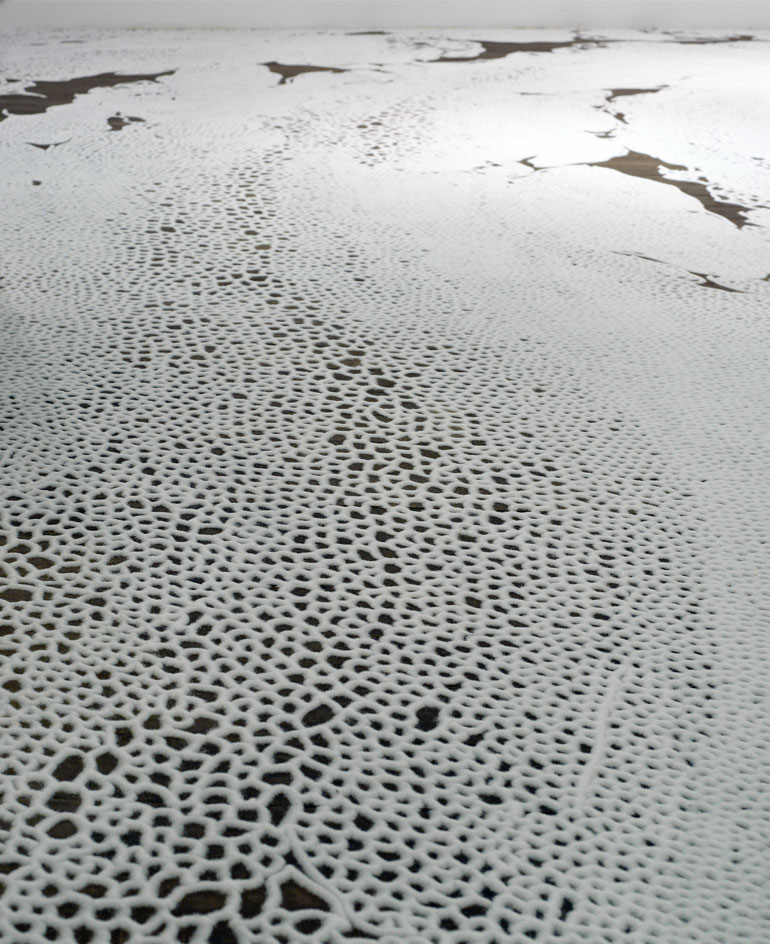
The Tokyo-based artist spent 25 hours hunched on his knees to create the installation, using a plastic bottle with a narrow nozzle to painstakingly 'draw' thousands of arcs of salt. The result is part mind-bending maze, part Tibetan mandala

The Japanese are familiar with the presence of salt as an icon, often placing it in piles at shop entrances to ward off evil spirits. Yamamoto adopted it as a medium after the death of his sister at age 24, as a way for him to preserve the past
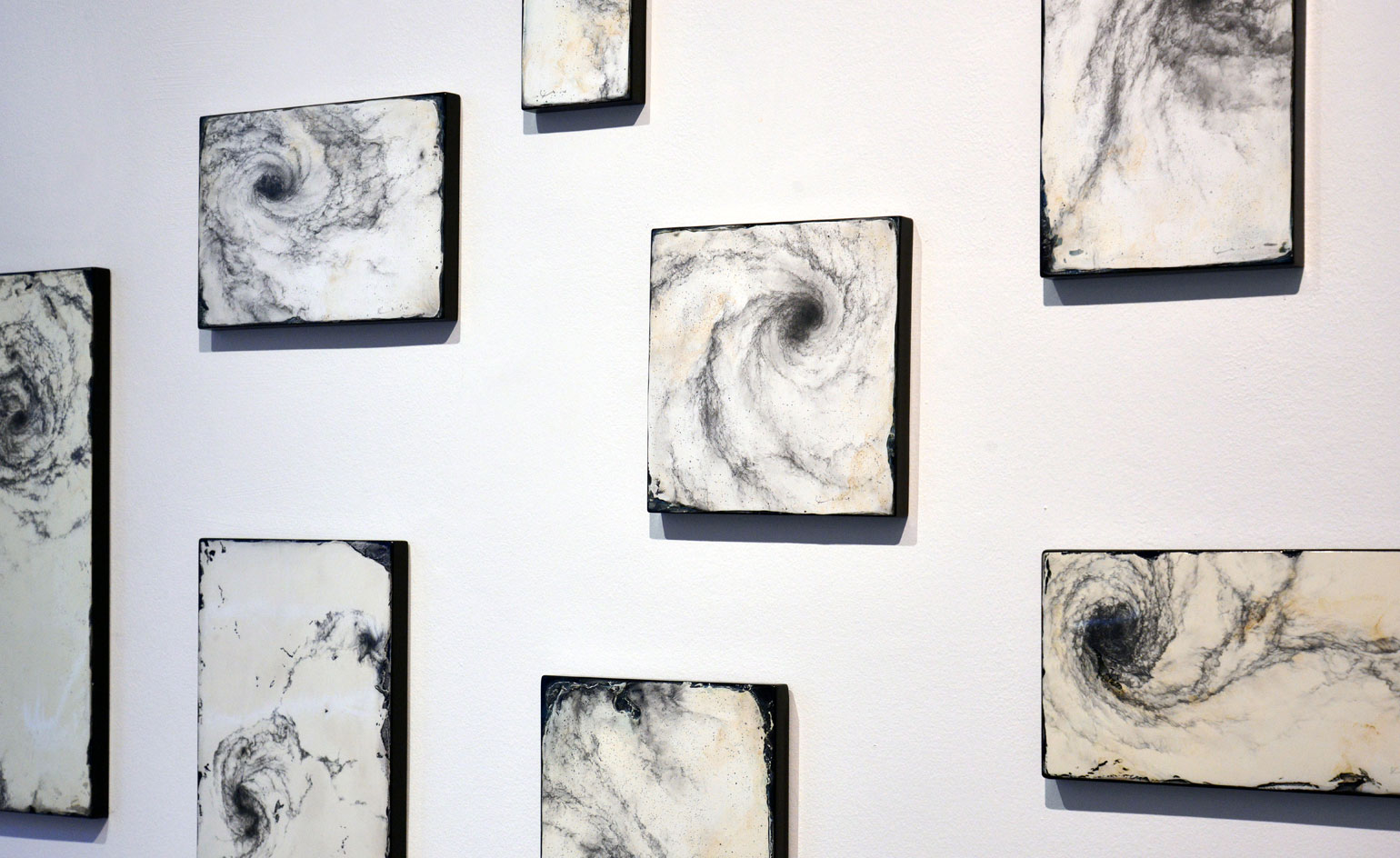
Yamamoto's latest exhibition is accompanied by additional photographs and drawings
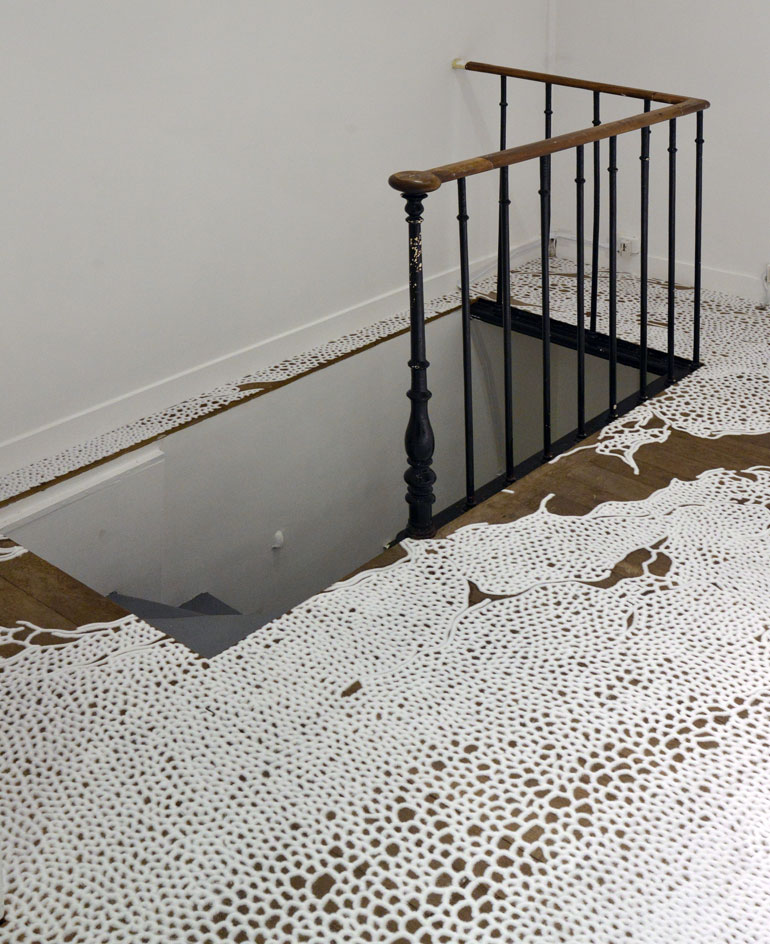
After Floating Garden runs its course, Yamamoto will sweep up every grain and return it to the sea in a ritual that highlights the role salt plays in the cycle of life

The weekend before the 'Floating Garden' launch, Yamamoto worked through the night in the tapestry gallery of Paris' Hôtel de Ville to create 'Labyrinthe'; the process was open to the public as part of the Nuit Blanche programme of events
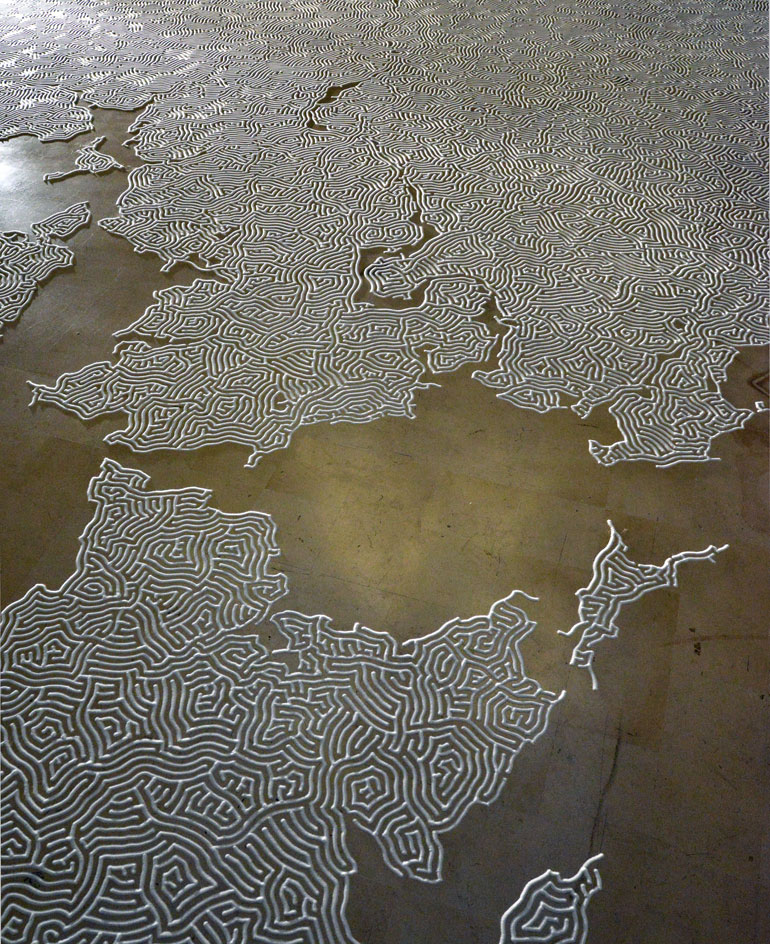
The artist's labyrinthine pattern begins to come together
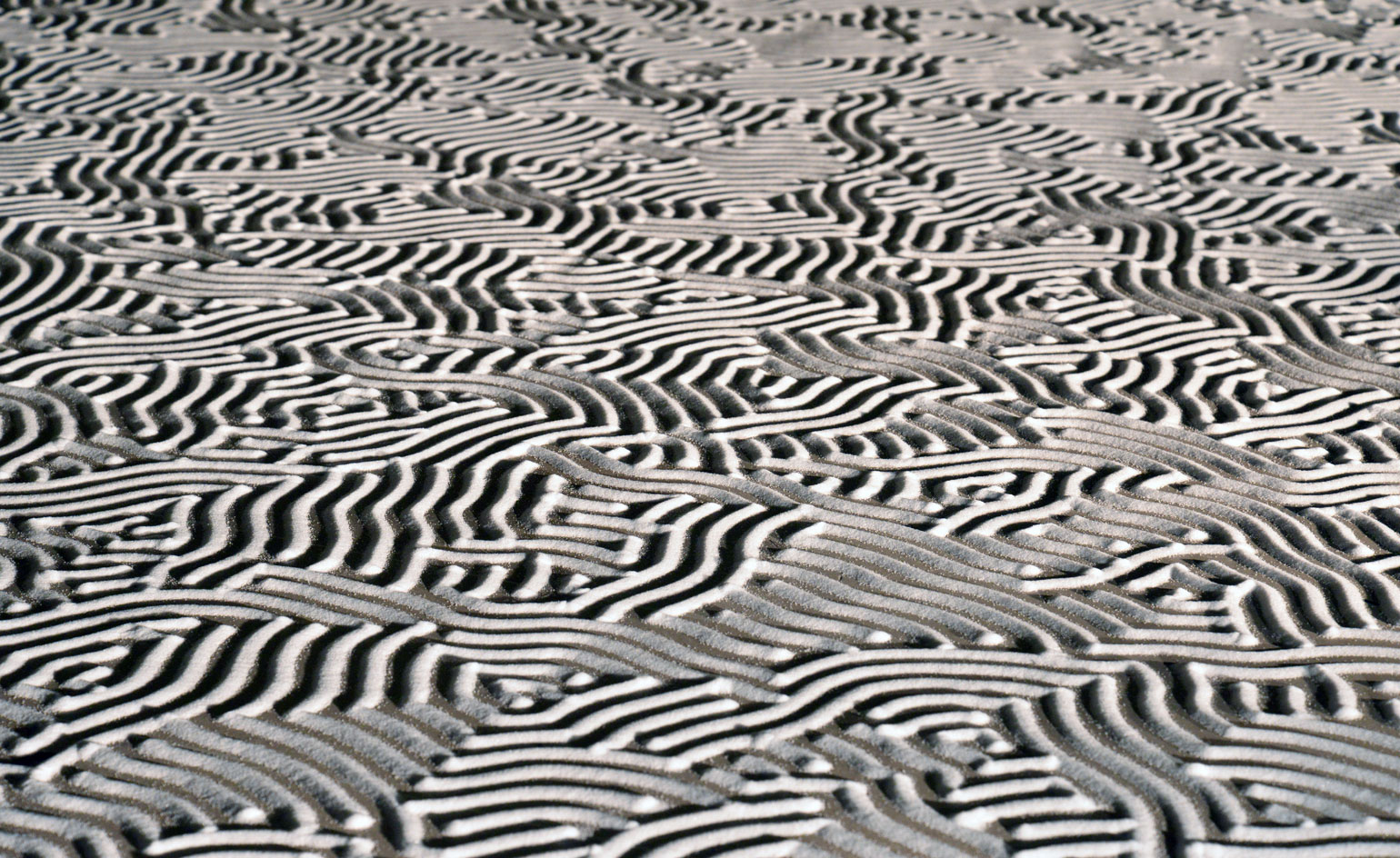
'Drawing a labyrinth with salt,' he says, 'is like following a trace of my memory. Memories seem to change and vanish as time goes by. What I seek is to capture a frozen moment that cannot be attained through pictures or writings'
ADDRESS
La Galerie Particulière
11 rue du Perche
Paris
Receive our daily digest of inspiration, escapism and design stories from around the world direct to your inbox.
Based in London, Ellen Himelfarb travels widely for her reports on architecture and design. Her words appear in The Times, The Telegraph, The World of Interiors, and The Globe and Mail in her native Canada. She has worked with Wallpaper* since 2006.
-
 Volvo’s quest for safety has resulted in this new, ultra-legible in-car typeface, Volvo Centum
Volvo’s quest for safety has resulted in this new, ultra-legible in-car typeface, Volvo CentumDalton Maag designs a new sans serif typeface for the Swedish carmaker, Volvo Centum, building on the brand’s strong safety ethos
-
 We asked six creative leaders to tell us their design predictions for the year ahead
We asked six creative leaders to tell us their design predictions for the year aheadWhat will be the trends shaping the design world in 2026? Six creative leaders share their creative predictions for next year, alongside some wise advice: be present, connect, embrace AI
-
 10 watch and jewellery moments that dazzled us in 2025
10 watch and jewellery moments that dazzled us in 2025From unexpected watch collaborations to eclectic materials and offbeat designs, here are the watch and jewellery moments we enjoyed this year